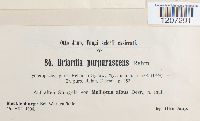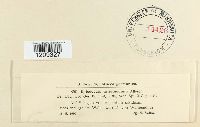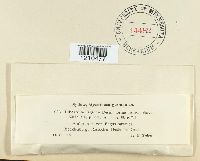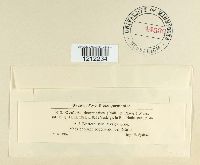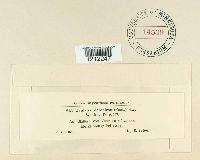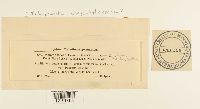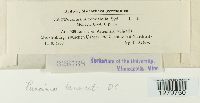University of Minnesota
http://www.umn.edu/
612-625-5000
http://www.umn.edu/
612-625-5000
Minnesota Biodiversity Atlas
Bell Museum
Dataset: MIN-Fungi
Search Criteria: Germany; Mecklenburg; excluding cultivated/captive occurrences
1
Page 1, records 1-9 of 9
Bell Museum fungi | |
MIN:Fungi | 46713[1207291]Jaap, O. 841904-08-15 Germany, Mecklenburg, by Warnemunde |
MIN:Fungi | Didymella superflua (Fuckel) Sacc. 470473[1209230]Sydow, H. 31081936-04-29 Germany, Mecklenburg, By Schwerin |
MIN:Fungi | Epicoccum intermedium Allesch. 14426[1209327]Sydow, H. 8501909-08-16 Germany, Mecklenburg, in Walde west of Warnemunde |
MIN:Fungi | Libertella faginea Desm. 14482[1210477]Sydow, H. 833 Germany, Mecklenburg, Rostocker heide by Graal |
MIN:Fungi | Naevia pusilla (Lib.) Rehm 47111[1221268]Jaap. O. 1061904-08-16 Germany, Mecklenburg, Strand bei Warnemunde |
MIN:Fungi | Ovularia destructiva (W. Phillips & Plowr.) Massee 14536[1212234]Sydow, H. 842 Germany, Mecklenburg, Moorwald bei Muritz |
MIN:Fungi | Ovularia veronicae Dufrenoy 14539[1212247]Sydow, H. 8451909-07-30 Germany, Mecklenburg |
MIN:Fungi | 483268[1229765]Sydow, H. 880 Germany, Mecklenburg, Walde bei Graal |
MIN:Fungi | Puccinia tanaceti P. Syd. & Syd. 326738[1279750]Sydow, P. 7581809-09-13 Germany, Mecklenburg, Neustrelitz |
1
Page 1, records 1-9 of 9
Google Map
Google Maps is a web mapping service provided by Google that features a map that users can pan (by dragging the mouse) and zoom (by using the mouse wheel). Collection points are displayed as colored markers that when clicked on, displays the full information for that collection. When multiple species are queried (separated by semi-colons), different colored markers denote each individual species.
